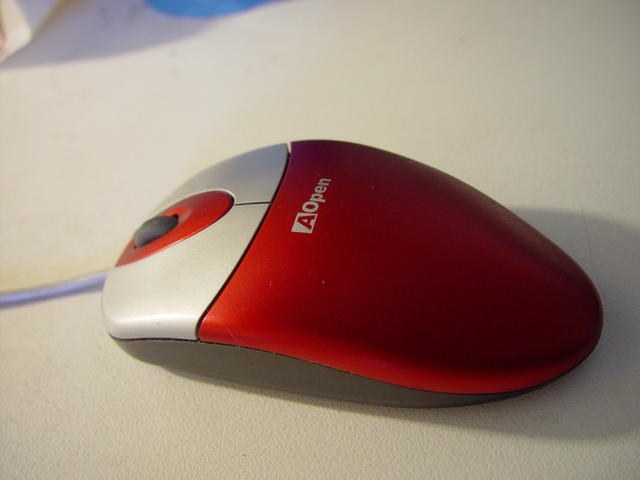To understand why the led on the mouse starts blinking and why is it needed at all, you need to first get acquainted with the principle of the optical mouse. Flip the paddle and let us consider an optical system. Pay attention to the detail of complex shape, which combines the lens and the prism. Prism desired for the reason that the led is horizontal, and the light must be downward. Directly on the Mat. The presence of a lens suggests that in mouse there is a camera.
This camera is very primitive. Resolution is only 16 lines of 16 pixels. Two times less than the mechanical cameras of the early twentieth century. She periodically takes pictures of the texture Mat, and a special microprocessor analyzes them. To offset the texture, it defines in which direction moved the mouse, and transmit to a computer information about it.
When the manipulator moves, the images must be done with great speed. The led should light up continuously, so that the camera could take a snapshot at any time when required. If the mouse is stationary, the "pictures" Mat possible. To save the resource of the led (and battery if we are talking about the mouse connected to the laptop, or the wireless pad), you can get it to stay lit, and blink rapidly. So quickly that the eye would think that it still glows continuously, but with less intensity. However, if the mouse is working in this mode, wave in the air, you notice the strobe effect. Scientifically, this method of brightness control is called pulse width modulation.
If the mouse is not in use for a few minutes, the microprocessor switches the LEDs in a more efficient mode. He begins to periodically give a short flash. Their duration is sufficient in order to have time to take a picture and determine whether the displaced manipulator. If it turns out that this is so, the microprocessor immediately translated led in a mode of constant illumination and will cause the camera to capture images with great frequency. But before that happens, there is a slight pause. So the mouse that was idle for a long time, may begin again to respond to the movements are not instantly - this is normal.
This camera is very primitive. Resolution is only 16 lines of 16 pixels. Two times less than the mechanical cameras of the early twentieth century. She periodically takes pictures of the texture Mat, and a special microprocessor analyzes them. To offset the texture, it defines in which direction moved the mouse, and transmit to a computer information about it.
When the manipulator moves, the images must be done with great speed. The led should light up continuously, so that the camera could take a snapshot at any time when required. If the mouse is stationary, the "pictures" Mat possible. To save the resource of the led (and battery if we are talking about the mouse connected to the laptop, or the wireless pad), you can get it to stay lit, and blink rapidly. So quickly that the eye would think that it still glows continuously, but with less intensity. However, if the mouse is working in this mode, wave in the air, you notice the strobe effect. Scientifically, this method of brightness control is called pulse width modulation.
If the mouse is not in use for a few minutes, the microprocessor switches the LEDs in a more efficient mode. He begins to periodically give a short flash. Their duration is sufficient in order to have time to take a picture and determine whether the displaced manipulator. If it turns out that this is so, the microprocessor immediately translated led in a mode of constant illumination and will cause the camera to capture images with great frequency. But before that happens, there is a slight pause. So the mouse that was idle for a long time, may begin again to respond to the movements are not instantly - this is normal.
